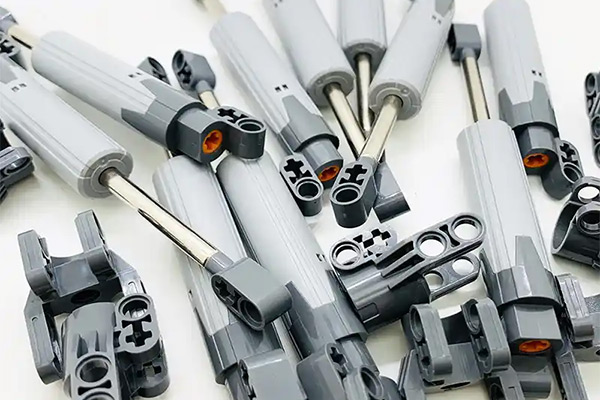Application of 12000N Electric Actuators in Heavy Machinery
In the rapidly evolving landscape of industrial automation, electric actuators are increasingly becoming a pivotal force driving progress across various industries. Particularly in the realm of heavy machinery, where powerful thrust and precise control are paramount, 12000N electric actuators are setting new industry benchmarks with their exceptional performance. This not only signifies a technological leap but also heralds a comprehensive improvement in the efficiency, safety, and intelligence of heavy machinery operations.
Challenges and Opportunities: Automation Demands of Heavy Machinery
Heavy machinery, such as large engineering vehicles, metallurgical equipment, ship control systems, and mining equipment, often operates in complex and harsh environments, placing extremely high demands on drive components. While traditional hydraulic or pneumatic systems offer advantages in thrust, they face issues like leakage risks, high maintenance costs, low energy efficiency, and limited control precision. With the deepening of Industry 4.0 and smart manufacturing concepts, there is an urgent market demand for cleaner, more efficient, and more intelligent drive solutions.
The advent of the 12000N electric actuator perfectly fills this gap. With its characteristics of high thrust, high precision, high reliability, and easy integration, it provides a fresh perspective and practical path for the automation upgrade of heavy machinery.
Core Advantages of the 12000N Electric Linear Actuator
1. Surging Power: The Robust Support of 12000N Thrust
A thrust of 12000N is more than sufficient to meet the rigorous load demands in various heavy machinery applications. Whether it's opening heavy valves, precisely controlling the posture of large equipment, or driving material handling systems, this powerful linear thrust ensures the stable and efficient operation of equipment, significantly boosting operational efficiency and productivity.
2. Precision Control: Millimeter-Perfect Positioning Capability
Compared to hydraulic or pneumatic systems, electric actuators offer an unparalleled advantage in position control accuracy. By integrating high-resolution encoders and advanced control algorithms, the 12000N electric actuator can achieve sub-millimeter precision displacement. This is crucial for heavy machinery requiring precise alignment and fine adjustments, such as in automated assembly lines or large CNC equipment.
3. Energy Efficient: A Green Choice for Lower Operating Costs
Electric actuators convert electrical energy directly into mechanical energy, avoiding the energy losses inherent in the conversion processes of hydraulic or pneumatic systems, thereby significantly improving energy efficiency. Furthermore, electric actuators typically consume power only when movement is required, whereas hydraulic systems need to continuously maintain pressure. This allows electric actuators to save substantial energy over long-term operation, aligning with current green manufacturing and sustainable development principles.
4. High Integration and Smart Connectivity
Modern 12000N electric actuators typically feature multiple communication interfaces (such as CANopen, EtherCAT, PROFINET, etc.), allowing for seamless integration into complex industrial control systems. This not only simplifies wiring and installation but also enables remote monitoring, fault diagnosis, and predictive maintenance. This high level of integration is fundamental to achieving intelligent and networked heavy machinery.
Application Practices: Typical Cases of 12000N Electric Actuators in Heavy Machinery
● Metallurgical Industry: Precise Control Under High Temperature and Pressure
In steel smelting and non-ferrous metal production, precise control of large valves and adjustment devices is crucial. The 12000N electric actuator can withstand high-temperature environments and provide stable and reliable thrust, ensuring the precise opening, closing, and positioning of coke oven gates, blast furnace top charging bells, or continuous casting machine guiding devices, significantly enhancing the automation level and safety of the production process.
● Construction Machinery: Improving Operational Efficiency and Safety
In construction machinery such as excavators, cranes, and loaders, 12000N electric actuators can be used to control the extension and angle adjustment of boom arms, crane jibs, or outriggers. Their fast response and high precision allow operators to perform material handling and positioning tasks more accurately, reducing errors from manual operation and improving construction efficiency and operational safety.
● Marine and Offshore Engineering: Reliable Assurance in Harsh Environments
Ship rudders, cabin doors, valves, and offshore drilling platform lifting systems all demand extremely high reliability from actuators. With their excellent anti-corrosion, dustproof, waterproof, and vibration resistance, 12000N electric actuators can operate stably in harsh marine environments, ensuring the normal operation of ships and offshore equipment.
● Mining Equipment: The Perfect Combination of Heavy Load and Remote Control
In the mining industry, large crushers, conveyor belt adjustment devices, and mine ventilation systems all require powerful thrust to drive them. The 12000N electric actuator not only provides sufficient thrust, but its easy integration and remote control capabilities also make operation in dangerous or hard-to-reach areas possible, significantly improving the safety and automation of mining operations.
Future Outlook: Towards Smarter, More Efficient Heavy Machinery
The application of 12000N electric linear actuators in heavy machinery is gradually transforming traditional operating modes and production efficiency. With continuous technological advancements, we can anticipate that future electric actuators will become even smaller, more modular, and possess stronger self-diagnosis, self-adaptation, and collaborative capabilities. They will be deeply integrated with cutting-edge technologies like artificial intelligence and big data analytics, jointly building a smarter, more efficient, and safer heavy machinery automation ecosystem.
The 12000N electric actuator is not merely a simple drive component; it is a vital engine propelling heavy machinery towards a smart and green future, and it is destined to become a new milestone in the field of industrial automation.





